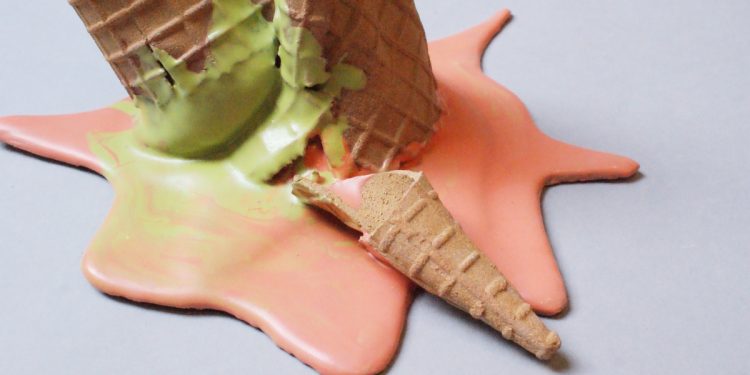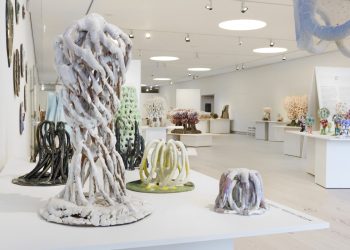The Céramiques gourmandes exhibition at Fondation Bernardaud, Limoges, was prolonged till October 31, 2020.
Participating artists: Chris Antemann (USA), Bachelot & Caron (France), Anna Barlow (UK), Charlotte Coquen (France), Christina Erives (Mexico), Jae Yong Kim (Korea), Juujuu Kim (Korea), Yuko Kuramatsu (Japan), Kaori Kurihara (Japan), Shayna Leib (USA), Susan Nemeth (UK), Marie Rancillac (France), Dong Won Shin (Korea), Jessica Stoller (USA).
When art becomes epicurean, voracious, pie-eyed with the pleasures of the palate– inventing dishes, desserts, pièces montées or banquet scenes–sinking its teeth into an examination of our relationship with food (guilty, sensual, problematic) – we have Céramiques gourmandes, an exhibition cooked up by the Fondation Bernardaud, featuring fourteen international artists with a taste for ceramic: the crème de la crème!
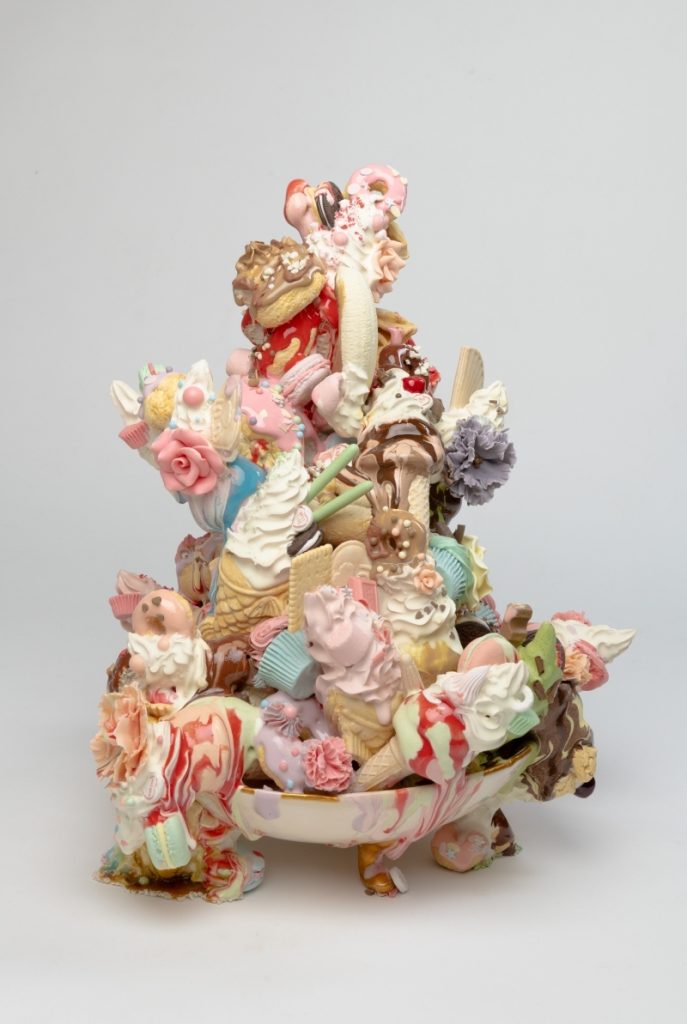
Anna Barlow, Ce n’est pas de la tarte. Photo by Jose Esteve 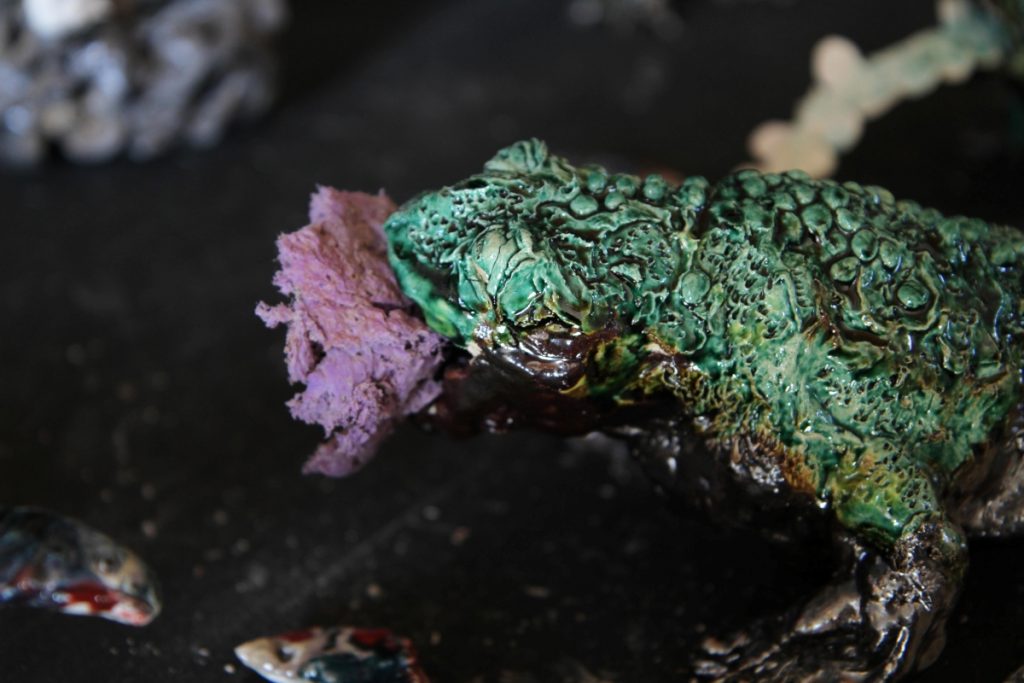
Bachelot & Caron, Glissement progressif (detail) 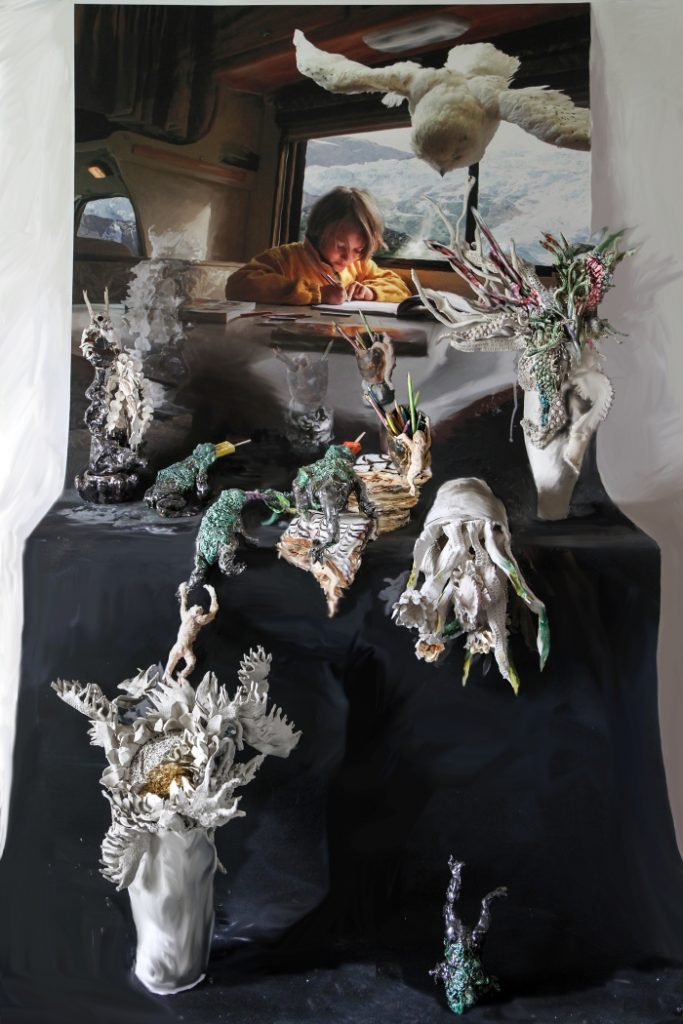
Bachelot & Caron, Glissement progressif 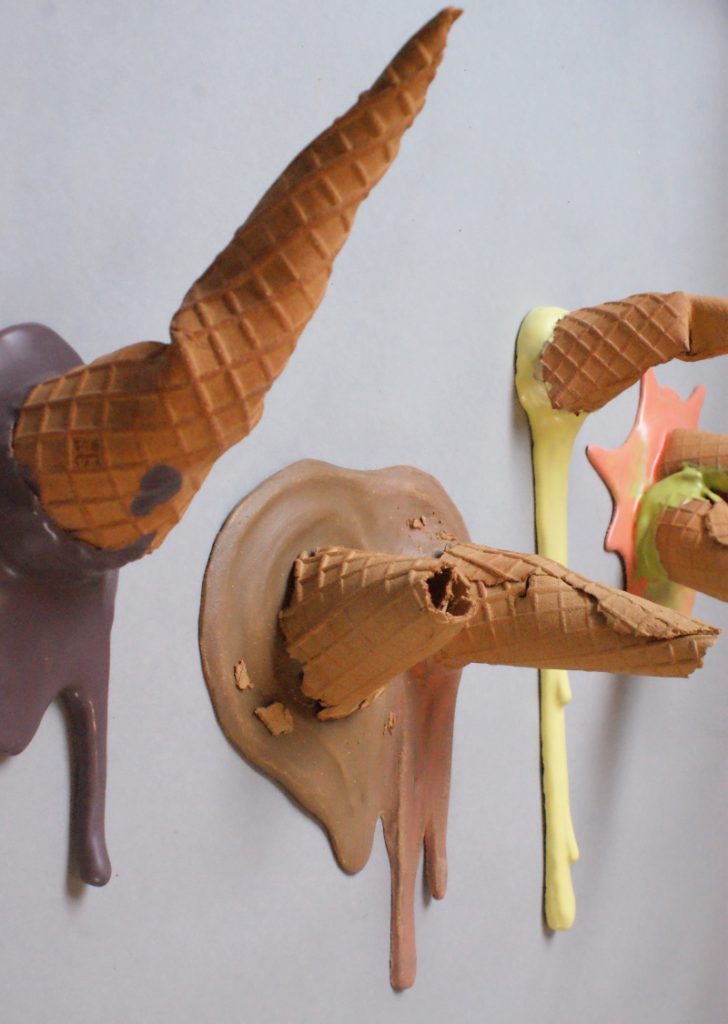
Charlotte Coquen, Y’en aura pas pour tout le monde 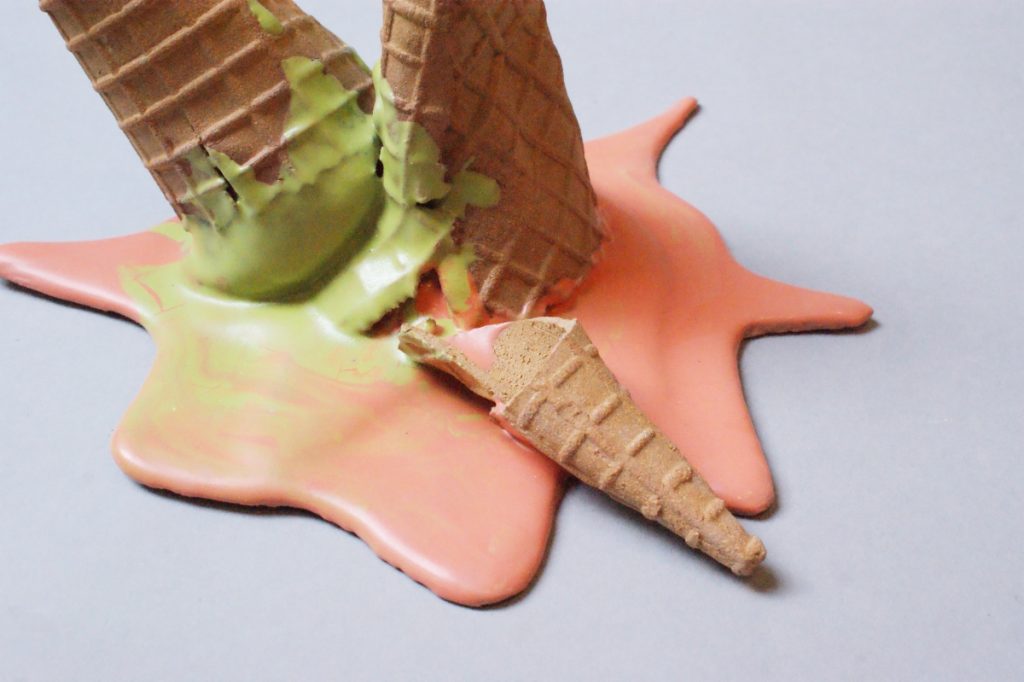
Charlotte Coquen, Y’en aura pas pour tout le monde 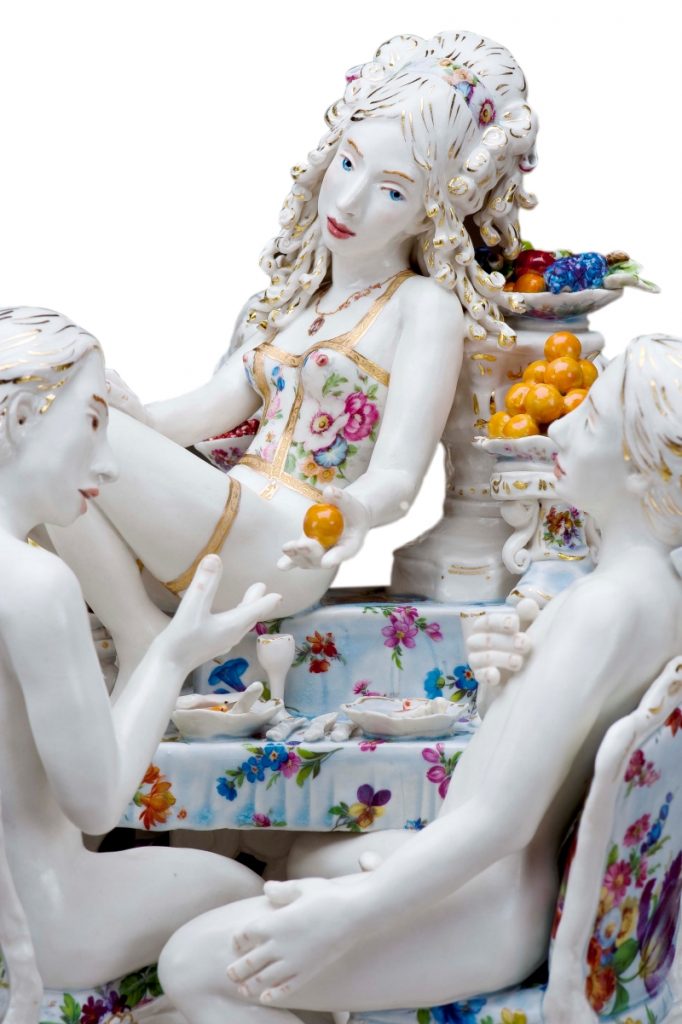
Chris Antemann, The Dining in the Orangery (detail). Photo by Kendrick Moholt 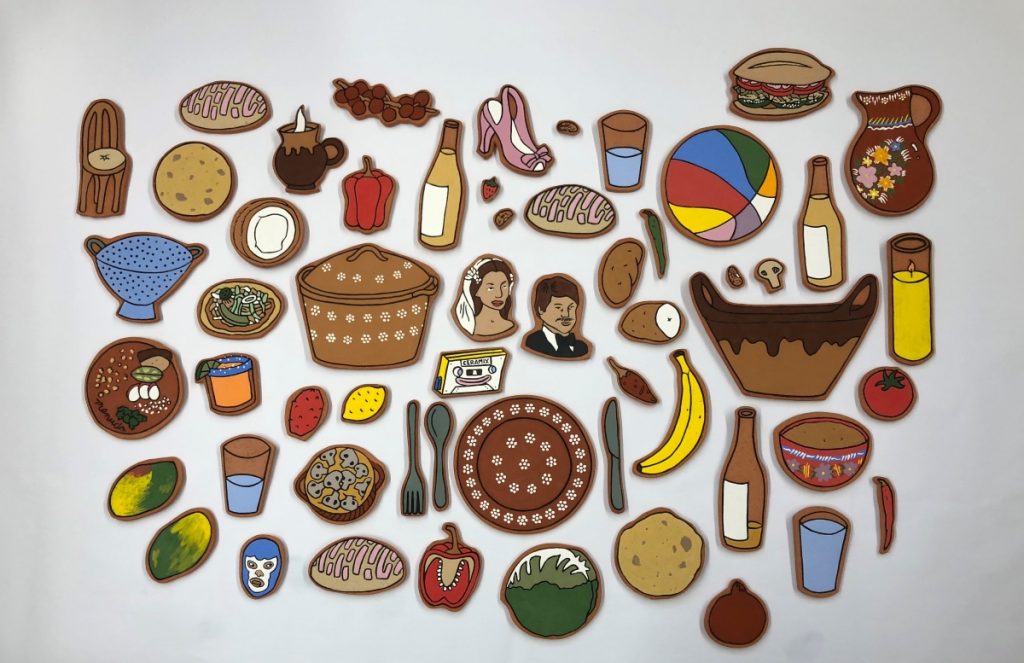
Christina Erives, Panza llena corazon contento 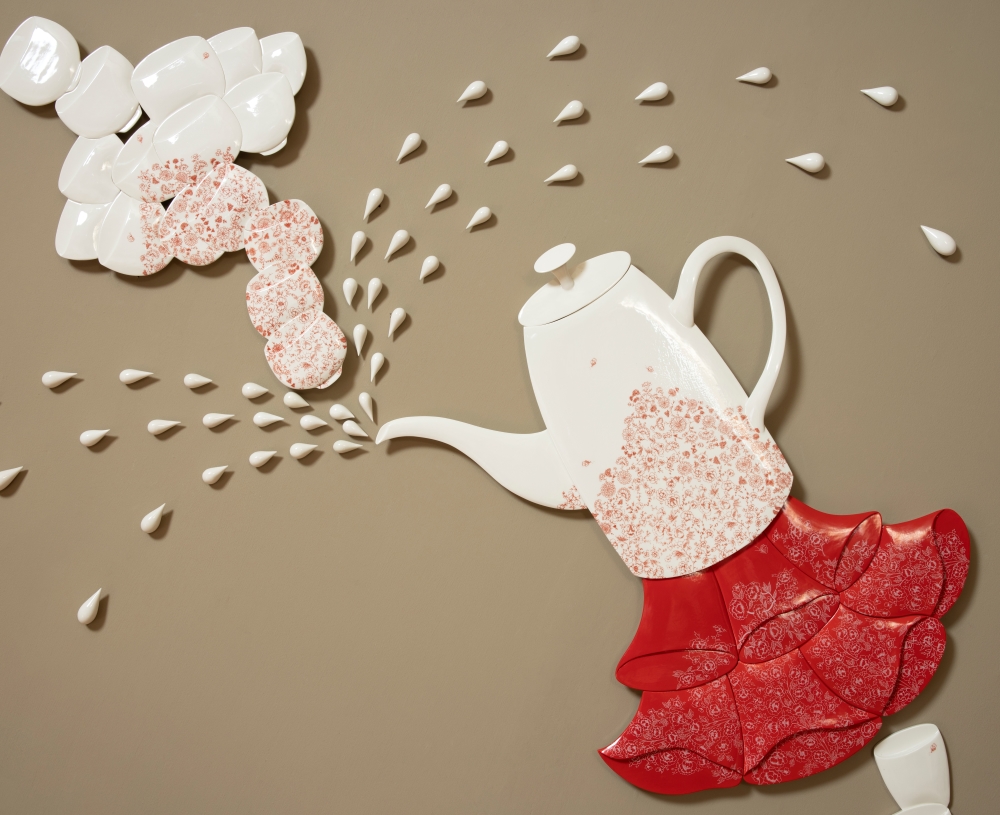
Dong Won Shin, Delight Party 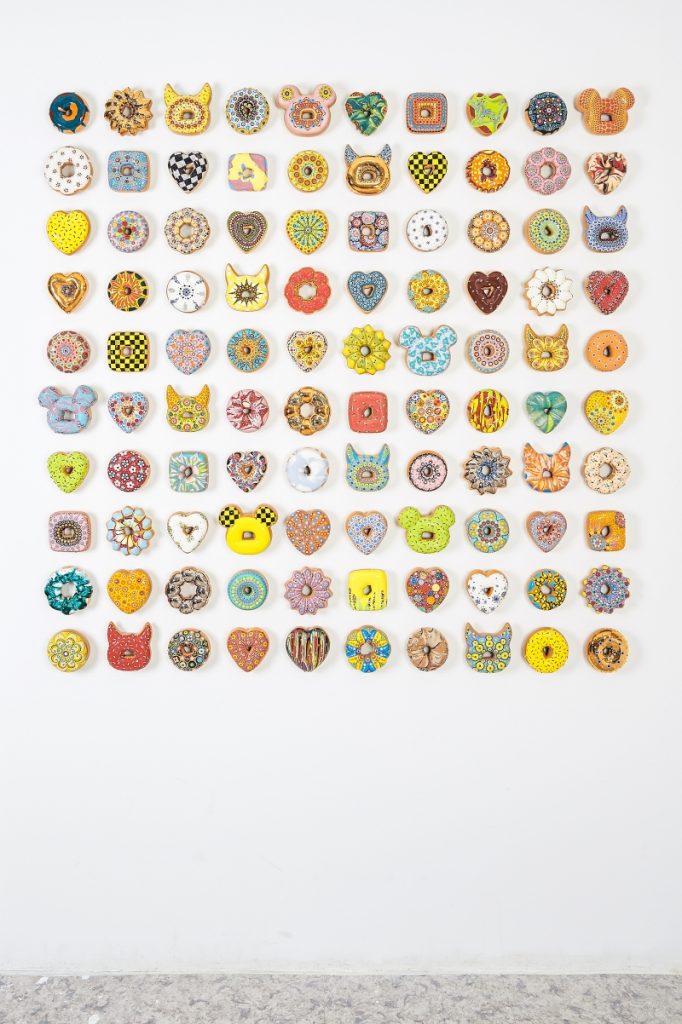
Jae Yong Kim, Donut Madness 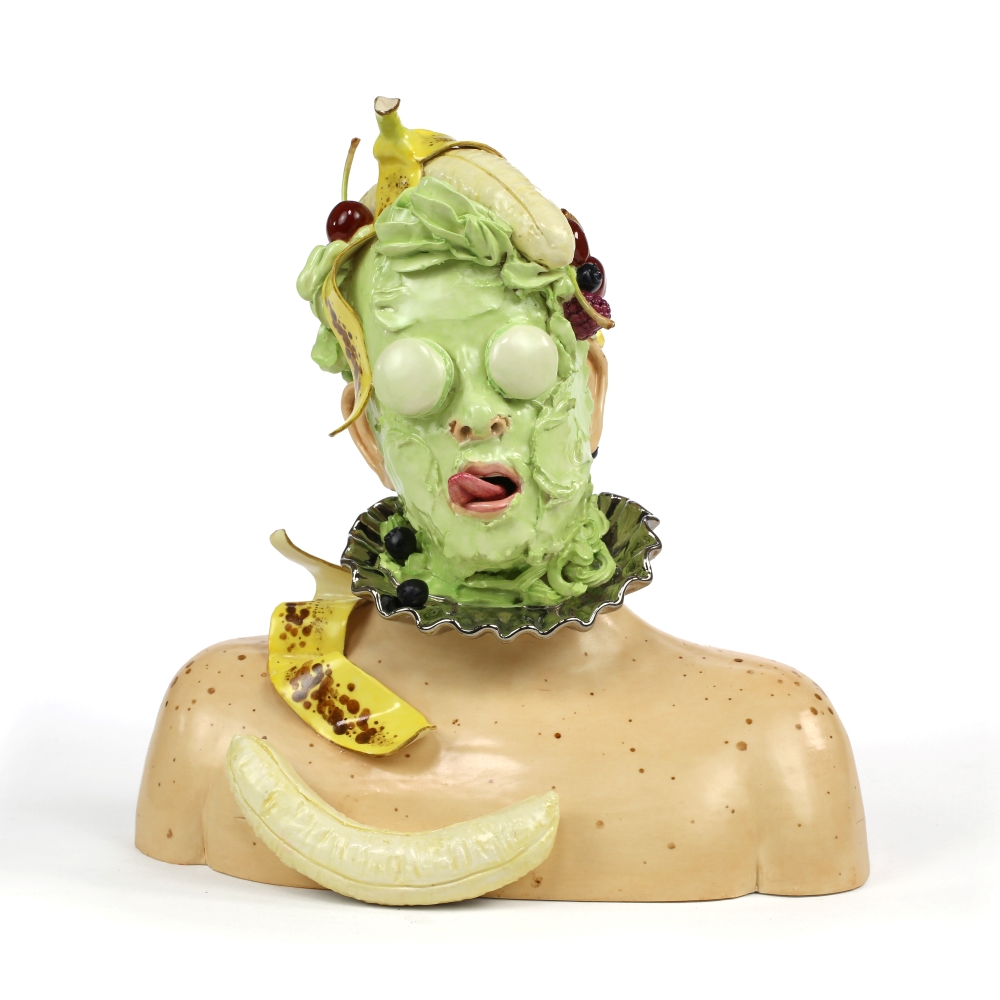
Jessica Stoller, Untitled (peel) 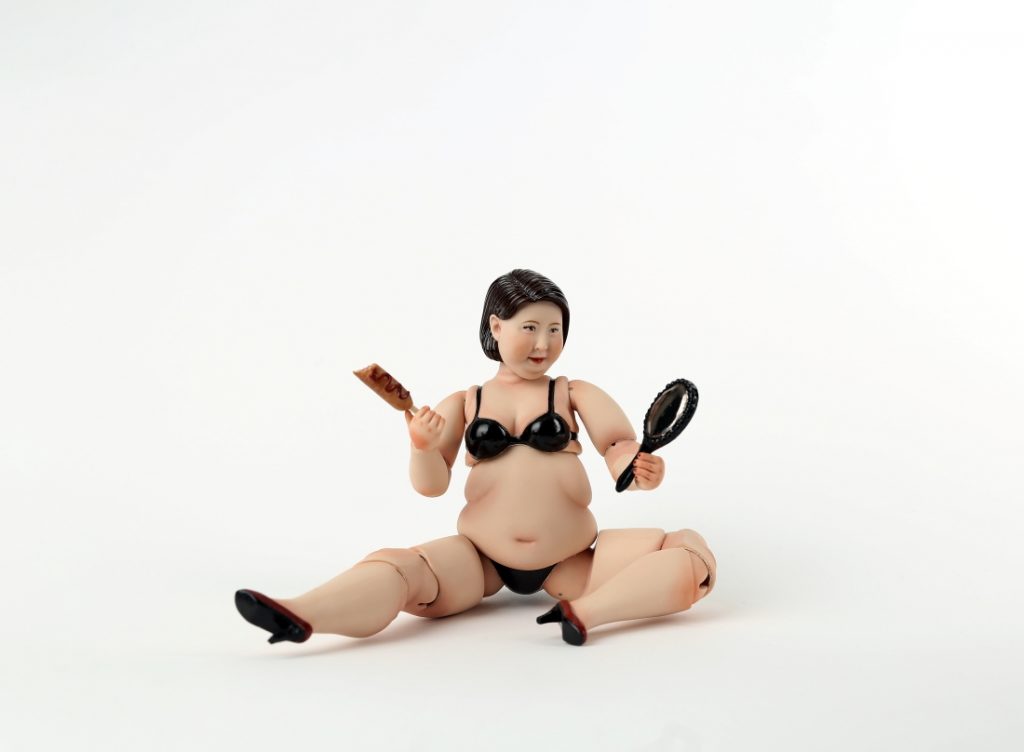
Juujuu Kim, Conflicting Fatty 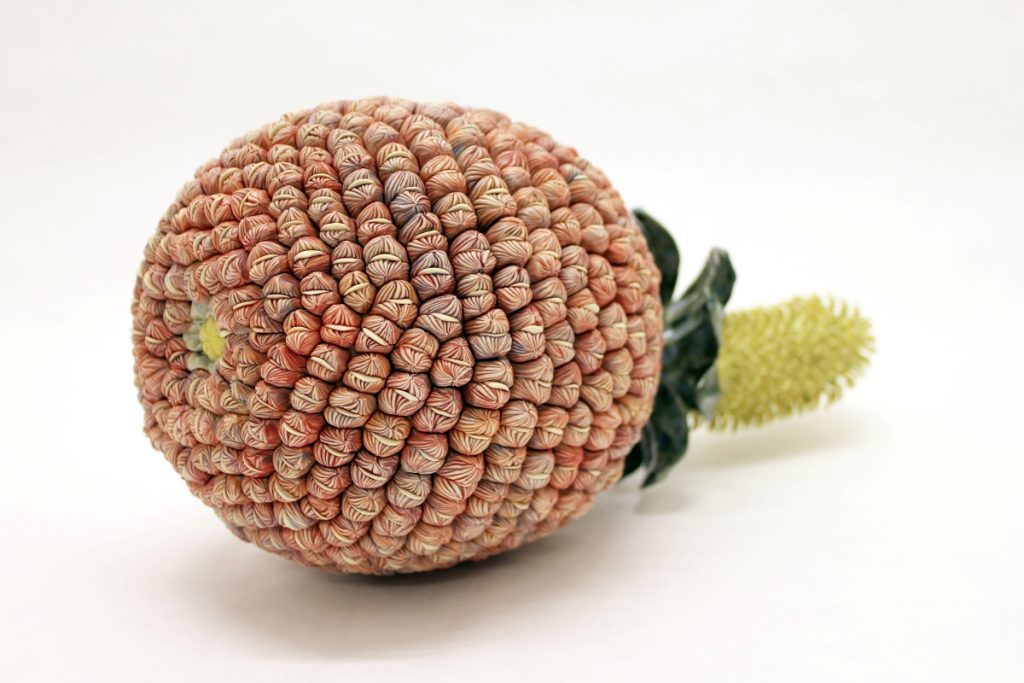
Kaori Kurihara, Vie sud 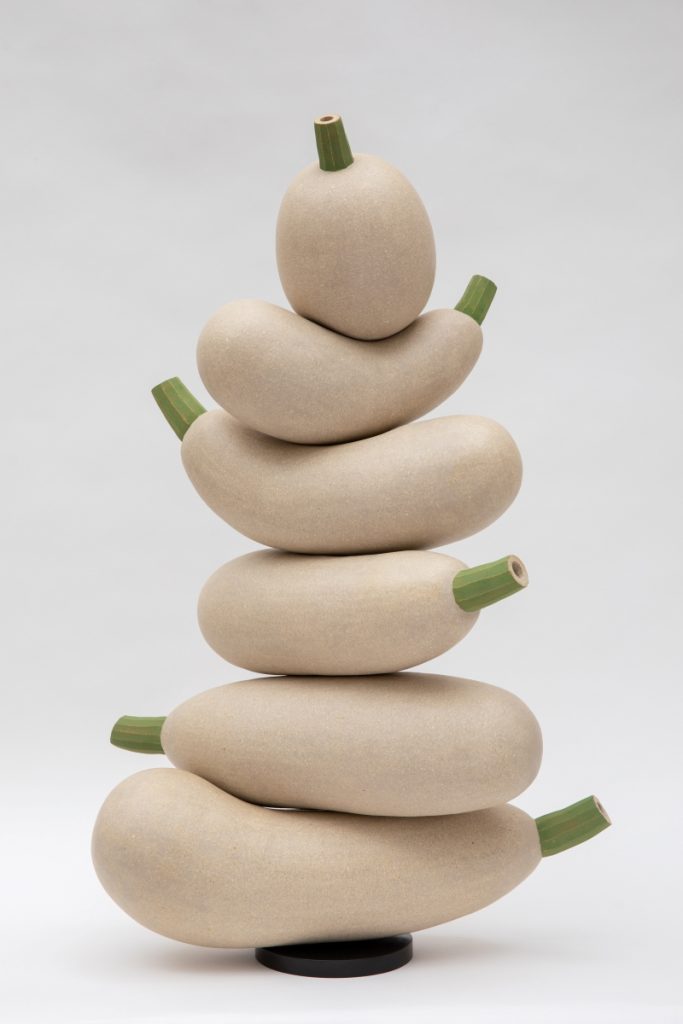
Marie Rancillac, Belles fanes 2 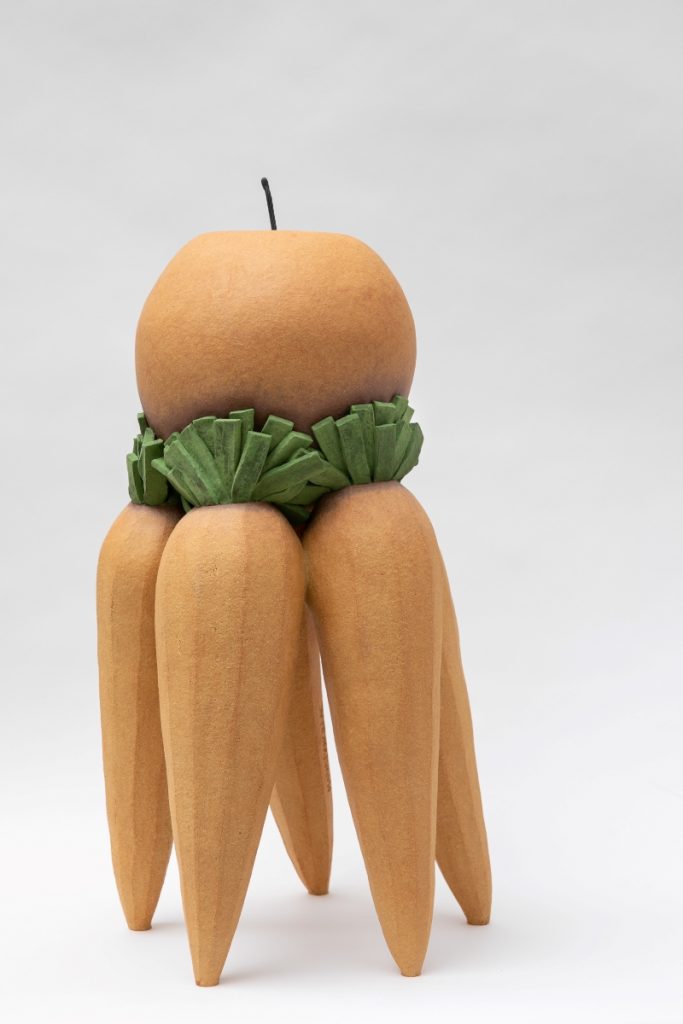
Marie Rancillac, Totem 2 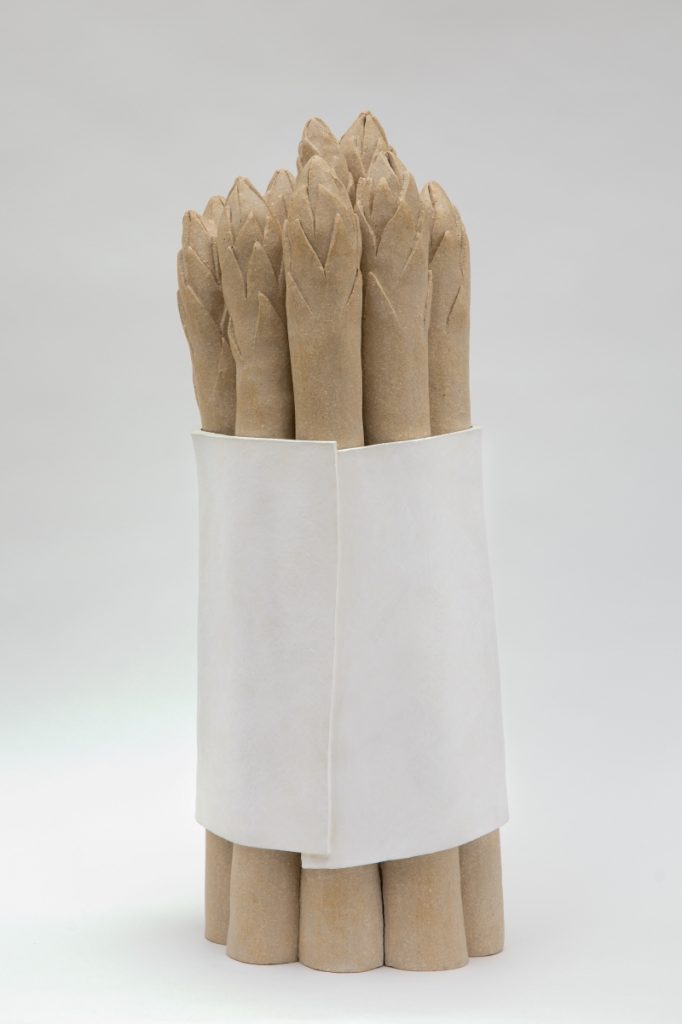
Marie Rancillac, Untitled 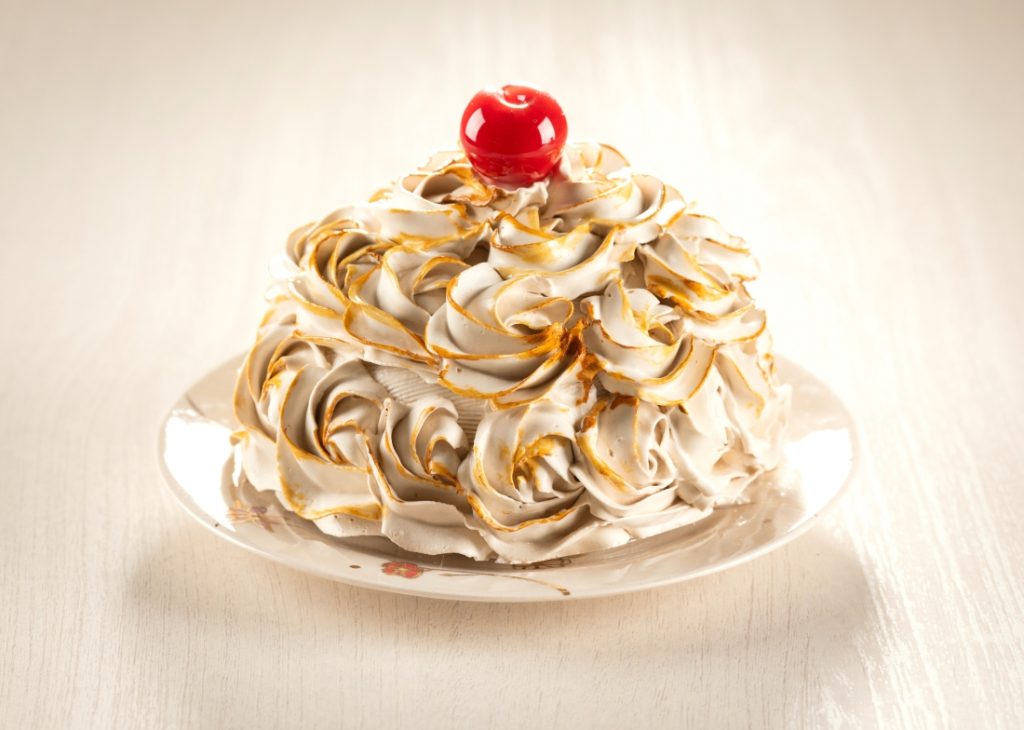
Shayna Leib, Baked Alaska. Photo by Eric Tadsen 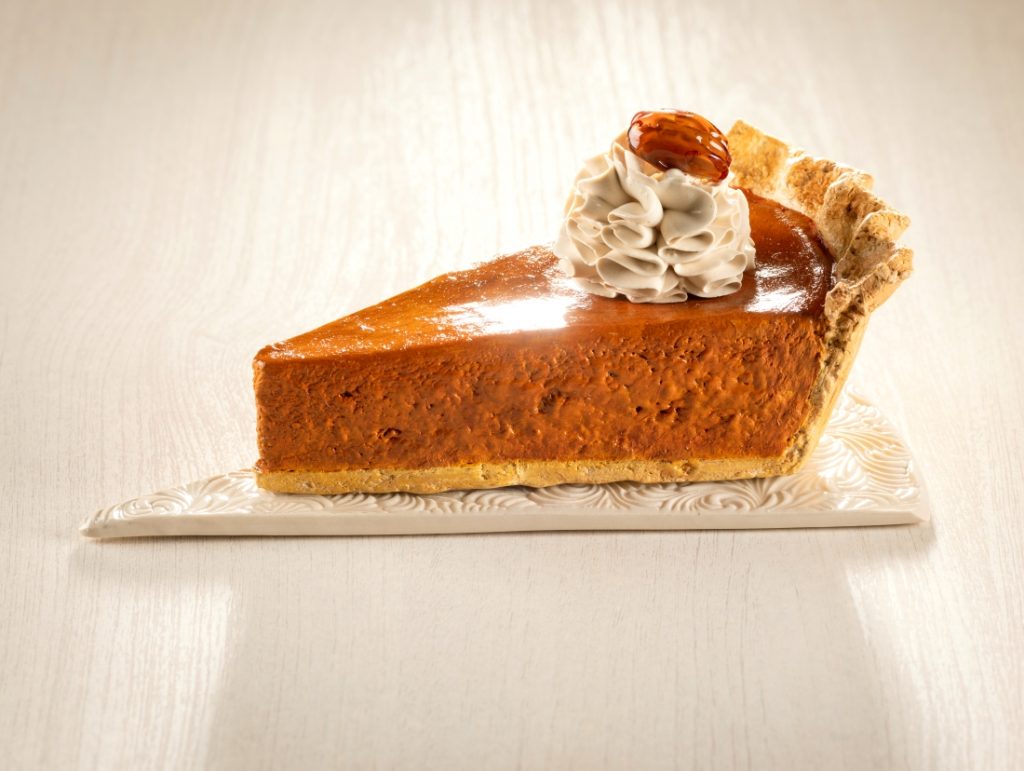
Shayna Leib, Pumpkin pie. Photo by Eric Tadsen 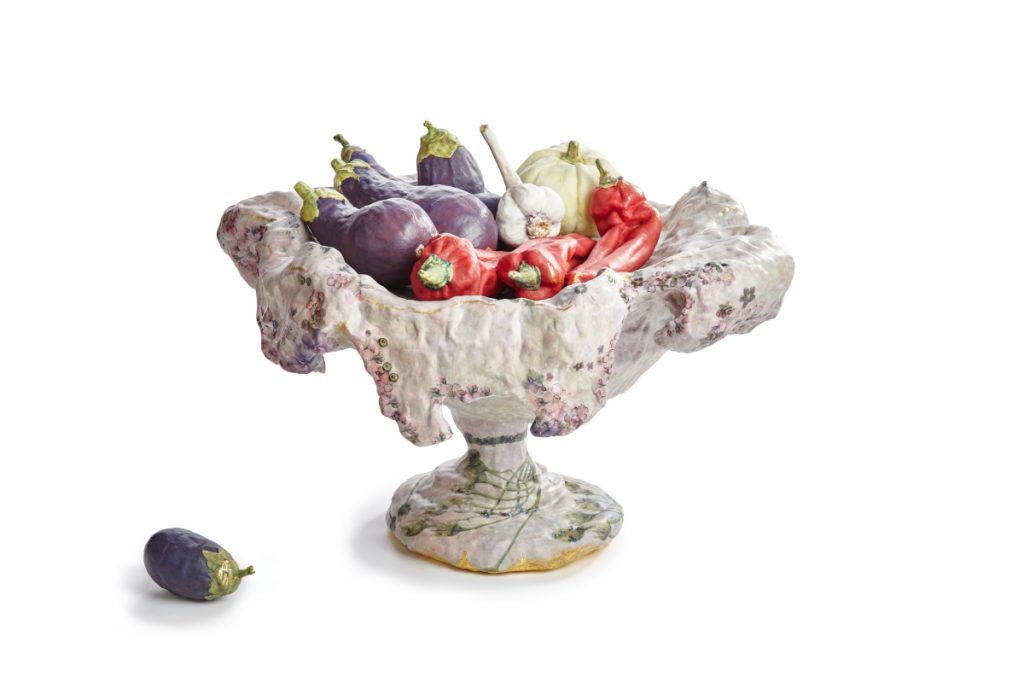
Susan Nemeth, Compotier with Peppers, Tomatoes & Fruits 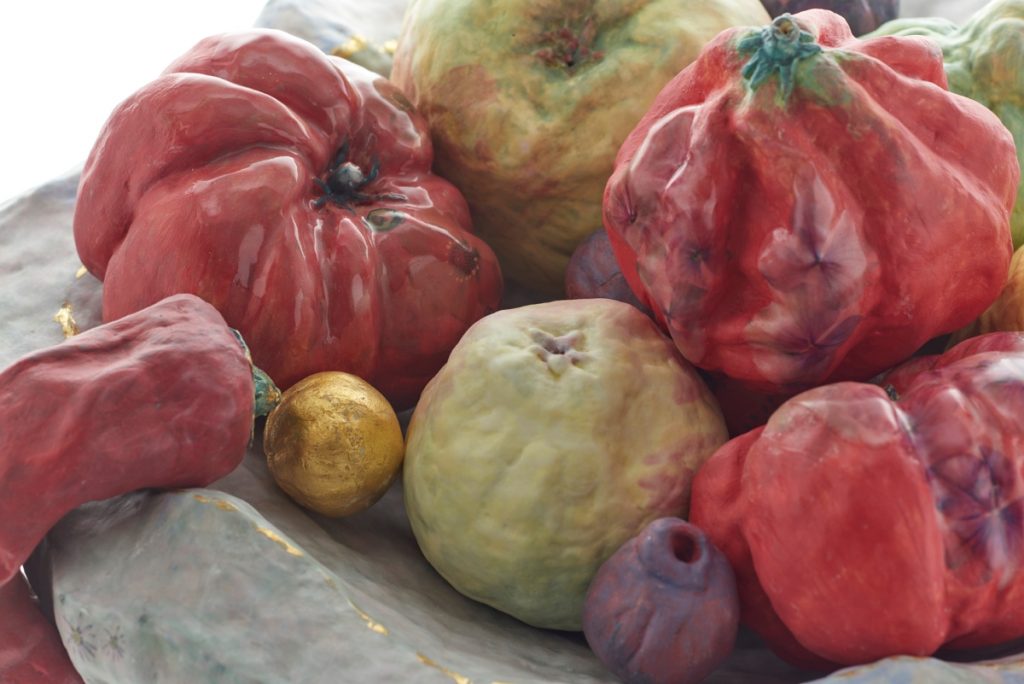
Susan Nemeth, Tureen with Aubergines, Peppers, Squash and Garlic 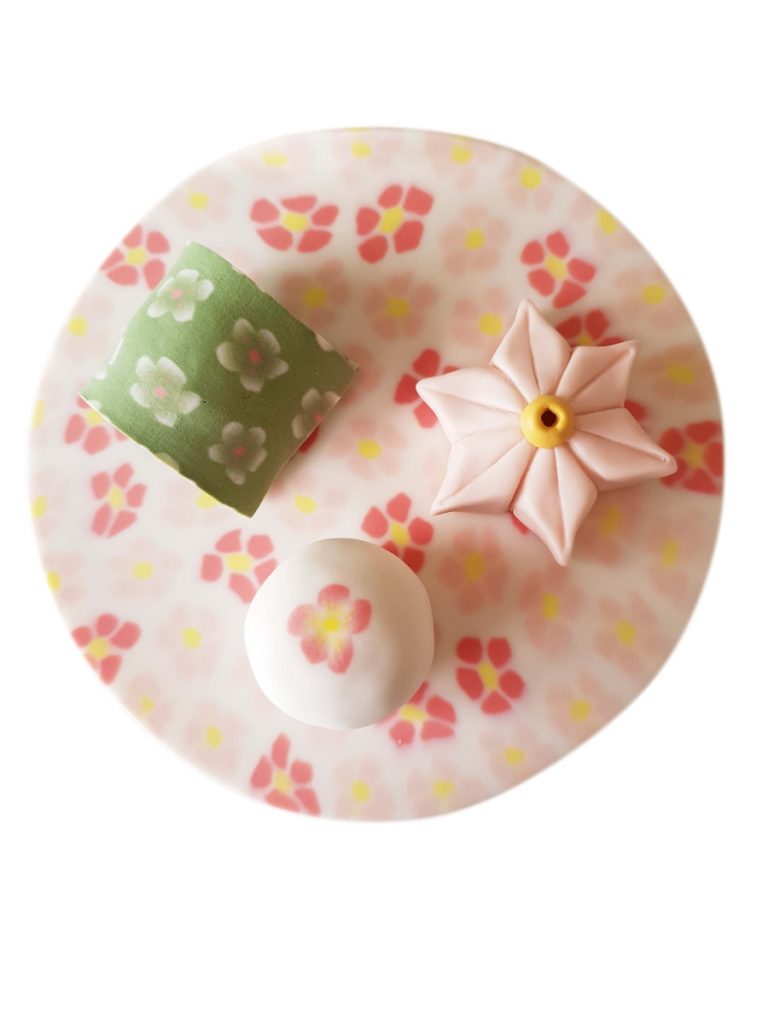
Yuko Kuramatsu, Untitled
Fired clay and fine fare have long been companions. Gustatory pleasure has inspired artists in every era: what we eat says so much about humankind, its environment and its excesses. The feasts we see here are technical feats, to be savored visually, virtually. Like a mouthwatering promise. You can almost hear the “mmmm”s, “yum”s, and “more”s.
In the 18th century, during the vogue for naturalism, ceramicists played with trompe l’oeil. Fantasies in faience and porcelain, decorated plates or trick displays, were wildly popular through Europe—England, Hungary, Germany, and France. There were reproductions of radishes, artichoke quarters, and hard-boiled eggs, sometimes doused in mayonnaise. Kilns yielded compotiers full of olives and bouchées à la reine. There were terrines in the form of pheasants, ducks, roosters; plates disguised as hearts of lettuce or bunches of asparagus; bonbonnières as lemons. Bestiary and kitchen garden were called upon to decorate festal tables.
Delectation is always a question of taste. Gluttons are scourged; gourmets’ refinement encouraged. What we eat reveals what we are. And in our consumer societies, now grown obese, the question of food is at the heart of sanitary, political, and ecological issues. We invent a decaffeinated delectation. We yield to a peculiar temptation: No fat. Zero calorie. Detox and Nutrasweet.
Although corpulence was long considereda sign of good health and social success, today it is the syndrome of unattractive people who eat too much and the wrong things (Jessica Stoller). These paradoxes are most concentrated, perhaps, in women’s bodies. Encouraged to be slim or even skinny, in a patriarchal, consumerist system, they are the locus of our schizophrenic desires (Juujuu Kim). Let us remember, too, that the female gender has for ages been associated with sugar: like children!
Sugar: let’s consider it. It is everywhere. And in Céramiques gourmandes, desserts are realer than real. They could be vanitas still lifes. A mountain of cream-filled cupcakes rises in a surfeit of desire (Anna Barlow).
Pastry chefs’ chef d’oeuvres employ artifice to explore the real (Shayna Leib). Ice cream cones are crushed against walls, traces of a battle or a frenzy of waste (Charlotte Coquen). 168 doughnuts, in the tradition of Pop Art, interrogate overproduction and mass consumption (Jae Yong Kim).
Japanese cakes vie with each other in realism: a taste of illusion and Nipponese culinary culture (Yuko Kuramatsu).
Isn’t our pleasure in eating a distillation of our identity? Do we not discover a country and its riches through its food? Do we not remember forever the food of our childhood or our origins? (Christina Erives)
“I brought to my lips a spoonful of tea in which I had soaked a bit of madeleine. But at the very instant the sip, mixed with crumbs of cake, touched my palate, I shivered, attentive to the extraordinary thing happening within me.” Marcel Proust
In the Fondation Bernardaud’s exhibition room, ceramic reveals its rites and performances, examines the beauty of a fruit (Marie Rancillac), imagines still lifes, fills compotiers with vegetables (Susan Nemeth), invents new recipes, extends itself to poetry (Kaori Kurihara) or the burlesque of a tottering tea party (Dong Won Shin), speaks with cutting humor of Darwin and evolution (Bachelot & Caron), or depicts deadly sin to today’s taste in very rococo scenes, where bodies are lascivious, expressions coquettish, and satire social (Chris Antemann): a moldable feast!
Curator: Olivier Castaing
Texts: Julie Estève
Director of the Fondation Bernardaud: Hélène Huret
The Fondation d’Entreprise Bernardaud was established in 2002 in Limoges by Michel Bernardaud, chairman and CEO of the eponymous company. It is directed by Hélène Huret. From the beginning, it has worked to endow the Limoges manufactory with a cultural dimension.
A visitor circuit has been set up to explain the history and manufacture of porcelain. In addition, the Fondation holds a themed exhibition every summer to present a broad range of contemporary ceramic works by international artists seldom shown in France. This demonstrates the great vitality of ceramics on the international art scene, especially porcelain, one of today’s most interesting artistic media.
Contact
+33(0)5 55 10 55 91
contact@bernardaud.com
Fondation Bernardaud
27, avenue Albert Thomas
87000 Limoges
France


